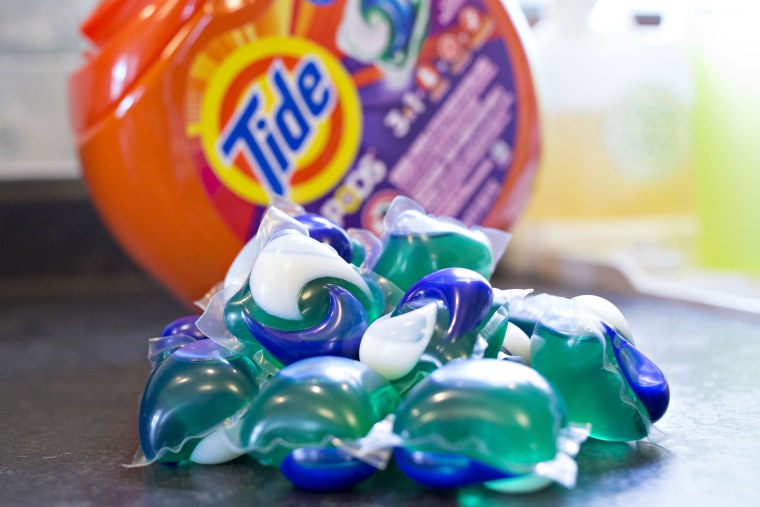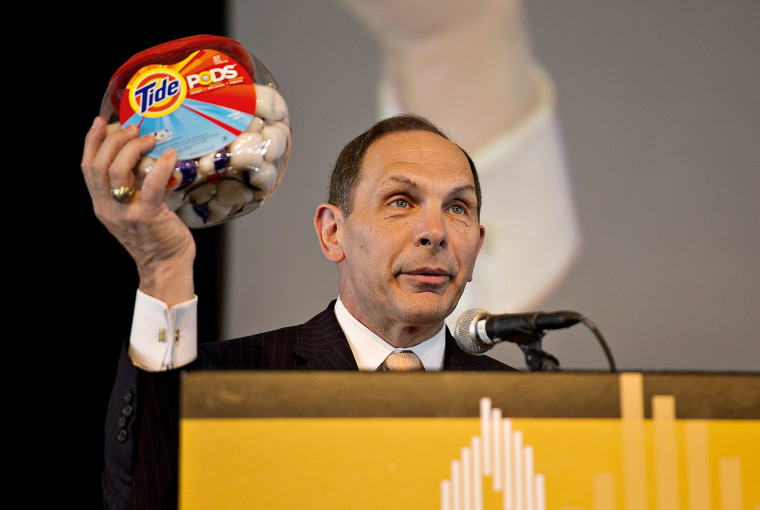According to a new report, an economic concept has worked a little bit too well in the case of one popular cleaning product.
On Monday, CNN published an investigation into the design of Tide Pods, the soft and colorful cleaning detergent tablets that have reached a market size of at least $9.04 billion by 2018, according to market research and consulting company Grand View Research. The report makes a remarkable claim: That Tide Pods, which have been known to be eaten by unsuspecting or vulnerable individuals like toddlers or elderly folks with dementia, were designed to look like candy.
Introduced in 2012 by Procter & Gamble, Tide Pods offered a solution to the consumer complaint that bottles of liquid detergent, first introduced in 1984, were heavy, hard to carry and difficult to pour. The pod’s technology solved that problem by concentrating the liquid down into a handheld, easily grabbable portion.

The object’s design also provided a solution to another issue of liquid detergents: By separating the cleaning solution into separate chambers, when its soluble plastic film dissolves in the wash, its detergent, stain remover and color protector are able to deliver the most impact, as mixing these ingredients in bottles can erode their cleaning power.
The design for Tide Pods was not born overnight, either. A complex engineering task, the concept involved years of research, more than 75 employees and 450 different packaging and product sketches. Thousands of consumers were surveyed in the hopes of bringing a sense of excitement to what is often seen as a necessary chore.
Still, as the report found, “a delectable blue, orange and white single packet of concentrated detergent” was seen by many to look like food, even sharing similar qualities as certain candy marketed to children, like the fruit snack Gushers, amongst other foods, resulting in the perception that accidents involving the pods were directly related to its design.
According to experts consulted for CNN’s report, that’s not totally by accident: Tide Pods may look the way they do because of a cleaning product design trend known as “food imitating products.”

“Tide Pods obviously remind people of foods, especially foods that have been made to appeal to children,” John Allen, an anthropologist at Indiana University and author of “The Omnivorous Mind: Our Evolving Relationship with Food,” told CNN. Allen added that its bite-sized, processed and colorful shape combined with its non-threatening texture make it look like candy or other snack foods.
CNN also spoke to Dr. Frédéric Basso, a professor at The London School of Economics and Political Science who researched the subject in a study called “Assessing the role of shape and label in the misleading packaging of food imitating products.”
“Food imitating products are chemical consumer items used frequently in the household for cleaning and personal hygiene,” reads the report, adding that bleach, soap and shampoo sometimes are designed to resemble food products. “Their containers replicate elements of food package design such as possessing a shape close in style to drinking product containers or bearing labels that depict colorful fruits.”
Basso said that by developing products that create links to food, play or other positive experiences, customers are less likely to automatically associate these items with an unpleasant or boring chore. He said this is why many nonedible items include scents of appetizing food or even in some cases closely resemble soft drinks in their packaging.
Whether Tide Pods were designed to look like food or not, its colorful and visually appealing design has attracted the human eye a little bit too well. In late 2017 and into the beginning of 2018, teens participated in the “Tide Pod challenge,” which involved biting down on laundry detergent packets like Tide’s and other brands and either spitting out or consuming the contents.
In addition to jokes, memes and even restaurants developing Tide Pod-themed dishes, there were many poisonings as a result of the challenge, so many that YouTube and other social media sites began removing videos with the #TidePodChallenge hashtag.
According to experts, the ingestion of concentrated detergent can cause excessive vomiting, lethargy and gasping. In some cases, victims stopped breathing and required ventilation support.
At the time of the challenge, the American Association of Poison Control Centers said 39 poison control center cases involved teens who intentionally exposed themselves, and that a further 10,570 reports of children aged five or younger were reported as being unintentionally exposed to the packets the previous year.
Moreover, researchers found an increase of nearly 20% in reports of children putting detergent packets into their mouths, resulting in sometimes-fatal tragedies. This issue resulted in Tide itself partnering with football star Rob Gronkowski to issue a PSA in 2018: “What the heck is going on, people? Use Tide Pods for washing. Not eating. Do not eat,” he said.
In response to concerns regarding safety issues with Tide Pods, P&G altered its packaging more than once: First, to make it more difficult to open with a double lid design. The company also changed the clear plastic of its original container to an opaque design that more closely resembles the rest of its product line.
Regarding the actual look of the Tide Pods, however, P&G has said accidents happen whether the product has no color, one color or multiple colors, claiming there is insufficient evidence to show that any color is linked to safety improvements, according to CNN.
P&G also said that keeping Tide Pods out of the reach of children is the most important prevention measure that households can take in keeping their families safe, which it reiterated in its “Up, Up and Away” campaign in 2015.
Still, a 2017 report found that six adults living with dementia and two children died as a result of ingestion of detergent packets.
"At P&G, safety is our top priority," Damon Jones, P&G Chief Communications Officer, told TODAY when reached for comment. "Tide Pods are designed to clean clothes and nothing more."
EDITOR'S NOTE (July 19, 2022 at 11:00 a.m. ET): This story has been updated with a statement from Procter & Gamble.
